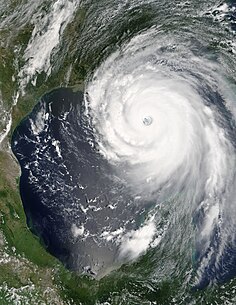Supertyphoon Megi Slams Into Philippines; One Missing
October 18, 2010, 2:04 AM EDT
By Cecilia Yap and Stuart Biggs
(Updates with storm makes landfall in first paragraph.)
Oct. 18 (Bloomberg) -- One person was missing in the Philippines as Supertyphoon Megi made landfall in northern Luzon, the nation’s most populous island, dumping heavy rain and prompting authorities to order evacuations.
Megi, known in the Philippines as Juan, came ashore near Divilacan Bay, southeast of the city of Tuguegarao at 11.25 a.m. local time, the Philippine Atmospheric, Geophysical & Astronomical Services Administration said. The storm is forecast to cross Luzon by early tomorrow before heading into the South China Sea toward southern China.
Megi had sustained winds of about 270 kilometers per hour before the eye crossed the coast, the U.S. Navy Joint Typhoon Warning Center said, making it a Category 5 storm capable of catastrophic damage. The government was criticized for its response last year when Tropical Storm Ketsana flooded Manila.
“We are better prepared now,” Executive Secretary Paquito Ochoa said at a briefing in the capital today. “Everybody is conscious about their jobs.”
Vicente Decena, a 53-year-old candidate in next week’s village council elections, is missing in Cagayan, the province’s police commander, Mao Aplasca, said in a mobile phone message to reporters.
Signal No. 4, the highest storm alert, was issued for the provinces of Isabela, Cagayan, Kalinga, Mountain and Ifugao, the weather agency said. Megi’s center was 70 kilometers east of Tuguegarao at 12 p.m.
Damaged Rice
The country may lose 600,000 metric tons of its rice crop, Agriculture Undersecretary Antonio Fleta said in a phone interview from Manila today. Half of the 157,000 hectares (388,000 acres) of land planted with rice in Cagayan and Isabela have yet to be harvested, he said. The Philippines is the world’s largest rice importer.
Cebu Air Inc. cancelled eight flights, the Philippines’ largest budget airline said in a mobile phone message. Philippine Airlines cancelled flights to Laoag north of Manila, spokeswoman Cielo Villaluna said by phone.
Megi may bring rains “similar” to Ketsana last year, Graciano Yumul, officer in charge of the weather bureau, said at a briefing in Manila today.
The Philippine agency said Megi’s winds were blowing at 225 kilometers per hour and the storm was moving west-southwest at 17 kph. The storm my dump as much as 60 millimeters (2.4 inches) of rain per hour.
Preparing Medicines
Food packs and medicines have been prepared in provinces that may be struck by the typhoon, the National Disaster Coordinating Council said in an advisory posted on its website today. Schools in affected areas were closed.
National Grid Corp. of the Philippines, which operates the country’s high-voltage transmission network, said it activated command centers at its main and regional offices to minimize the impact from the storm. Megi disrupted power supply in Cagayan province, the disaster council’s advisory said.
The Armed Forces of the Philippines has more than 2,000 units deployed in northern and central Luzon, the advisory said.
Emergency services are on alert and ready to carry out evacuations, President Benigno Aquino said in a statement posted on his website. “We do not want to unduly alarm the public, but there is nothing lost by being prepared,” he said in the statement.
Almost 5 million people were affected by floods as Ketsana swept across Luzon in September last year, leaving about 460 people dead.
“Catastrophic Damage”
Megi is a Category 5 storm, the strongest on the Saffir- Simpson scale. Such storms may cause “catastrophic damage,” according to the website of the U.S. National Hurricane Center. “People, livestock, and pets are at very high risk of injury or death from flying or falling debris.”
Storms in the northwest Pacific are designated as supertyphoons when their wind speed exceeds 241 kph, according to the U.S. National Oceanic and Atmospheric Administration.
Manila may escape last year’s levels of flooding as Megi passes to the north, Yumul said.
The Philippines is regularly battered by tropical cyclones that form over the Pacific Ocean to the east of the country. Typhoon Conson left 102 people dead in July and destroyed or damaged more than 70,000 homes, the disaster coordinating council said in August.
Megi will “severely” affect the south China coast, bringing heavy rains and winds after entering the eastern part of the South China Sea tomorrow, China’s National Meteorological Center said in a statement posted to its website today.
Megi is the name of a catfish in South Korea and is related to the feeling of getting wet, according to the Hong Kong Observatory, which lists names assigned to storms in the northwest Pacific. It is the 15th storm of the season.
--With assistance by Joel Guinto in Manila and Luzi Ann Javier in Singapore. Editors: Aaron Sheldrick, John Viljoen.
To contact the reporters for this story: Cecilia Yap in Manila at cyap19@bloomberg.net; Stuart Biggs in Tokyo at ssbiggs3@bloomberg.net.
To contact the editors responsible for this story: Reed Landberg at landberg@bloomberg.net; Amit Prakash at aprakash@bloomberg.net.
| 



















